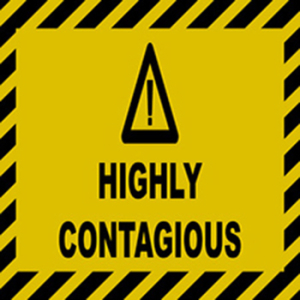By Dr. Ken Broda Bahm:

Every persuader, and legal persuaders in particular, understand that bias is both pervasive and powerful. The idea that potential jurors will be carrying attitudes and experiences that could influence their decision is the norm and not the exception. As a trial attorney, your goal is to eliminate it. In practice, however, it is more likely that you’ll be minimizing it. There aren’t enough strikes in the world. But is it enough if the biased jurors on your panel are numerically outweighed and outvoted by the other relatively unbiased jurors on your panel? Will deliberation take care of the problem when the biased jurors discover that most on the panel have different views and experiences? According to some recent research, the answer is “No.”
Using the example of bias based on pretrial publicity, the researchers from the University of South Florida (Ruva & Guenther, 2017) found that it is more likely that the bias will be contagious rather than being contained. The article entitled, “Keep your bias to yourself: How deliberating with differently biased others affects mock-jurors’ guilt decisions, perceptions of the defendant, memories, and evidence interpretation,” looks at the results from 648 mock jurors, half of whom were exposed to various forms of pretrial publicity on a criminal case. They looked at the influence of those exposed jurors when they were placed in groups with non-exposed jurors. The results suggest that, “during deliberations, pretrial publicity bias can spread to jurors not previously exposed to pretrial publicity.” These results serve to underscore the priority that litigators already place on rooting out bias, and remind us that we cannot count on bias being easily checked. And the findings also suggest that we devote further thought to ways to discover bias without furthering the spread of it.
Litigators and consultants alike often place faith in the curative power of deliberation. While individuals might have gaps in memory or might harbor biases, the small group, we think, will counterbalance and correct those mistakes and omissions. This is part of the rationale for juries in the first place. “The legal assumption,” the authors write, “is that untainted jurors will correct tainted jurors by recognizing and rejecting incorrect information, thus balancing the biases of individual jurors.”
And, anecdotally at least, it does seem like that group intelligence often works: Deliberating groups do seem to be more likely to get it right. Based on this research, however, it seems that we cannot say that deliberating groups will necessarily correct for the biases of one or more of their members. The study demonstrated that groups showed a lower opinion of the defendant, and a greater likelihood to vote guilty when they included members exposed to pretrial publicity that was slated against the defendant. As the researchers report, “These results suggest that in contrast to the legal assumption that deliberations are effective at correcting bias, deliberations provided an opportunity for the pretrial publicity-exposed jurors to spread their bias to jurors not previously exposed to pretrial publicity.”
Don’t Ignore Contagion in Voir Dire
Of course, the first opportunity for the contagion of bias to influence your jury is during voir dire, when panel members share attitudes or experiences that influence others on the panel, including the eventual jury. If, in response to a question, a potential juror shares a particularly strong opinion or vivid experience bearing on the case, that is going to be hard for the others to ignore. Some consultants and experienced attorneys will say that the contagious nature of these views should not matter. But what I think they really mean is that it should not matter as much as the goal of uncovering biases. In other words, don’t avoid a clear and useful question just because you are afraid that the answer will poison the jury.
That is still good advice. But it does not mean that the statements from the panel will have no effect. What we know about small groups and the importance of peer reference points suggests that it will have a substantial effect. Asking is better than allowing undiscovered bias onto your jury, but it still makes sense to consider ways to minimize that contagion during jury selection.
One way to do that is to ask for a supplemental questionnaire, allowing potential jurors to answer the most sensitive questions on paper and out of court, where their answers will have no influence on the other panelists. And when you are conducting oral voir dire, it is important to avoid what we call the “bad-for-you-majority” questions. In other words, phrase and frame your questions to avoid creating a situation where the opinion that hurts you seems like the dominant opinion. If a plaintiff, for example, asks “Who thinks there are two many lawsuits?” they will get around eight in ten agreeing. But if they purposefully reframe that to get a smaller, and more strikable group, then the question might be more like, “I know many of you think there are too many lawsuits, but who here is so opposed to lawsuits that you would not consider suing if you or your family members were injured?” And when someone voices an opinion that hurts you, note it and move on. Don’t ask, “why?” or otherwise allow them to expand upon their reasons. Unless you are actually grooming them for a cause challenge, it doesn’t make sense to give a strike-candidate a platform to potentially influence the others in the pool.
______
Other Posts on Bias:
- Prepare for your Post-Fact Jury: Top Posts
- Expect Bias Statements to be Unreliable and Often Overcorrected
- Instruct Jurors on Unconscious Bias
______
Ruva, C. L., & Guenther, C. C. (2017). Keep Your Bias to Yourself: How Deliberating With Differently Biased Others Affects Mock-jurors’ Guilt Decisions, Perceptions of the Defendant, Memories, and Evidence Interpretation. Law and human behavior, 41:5: 478-493.
Image credit: 123rf.com, used under license